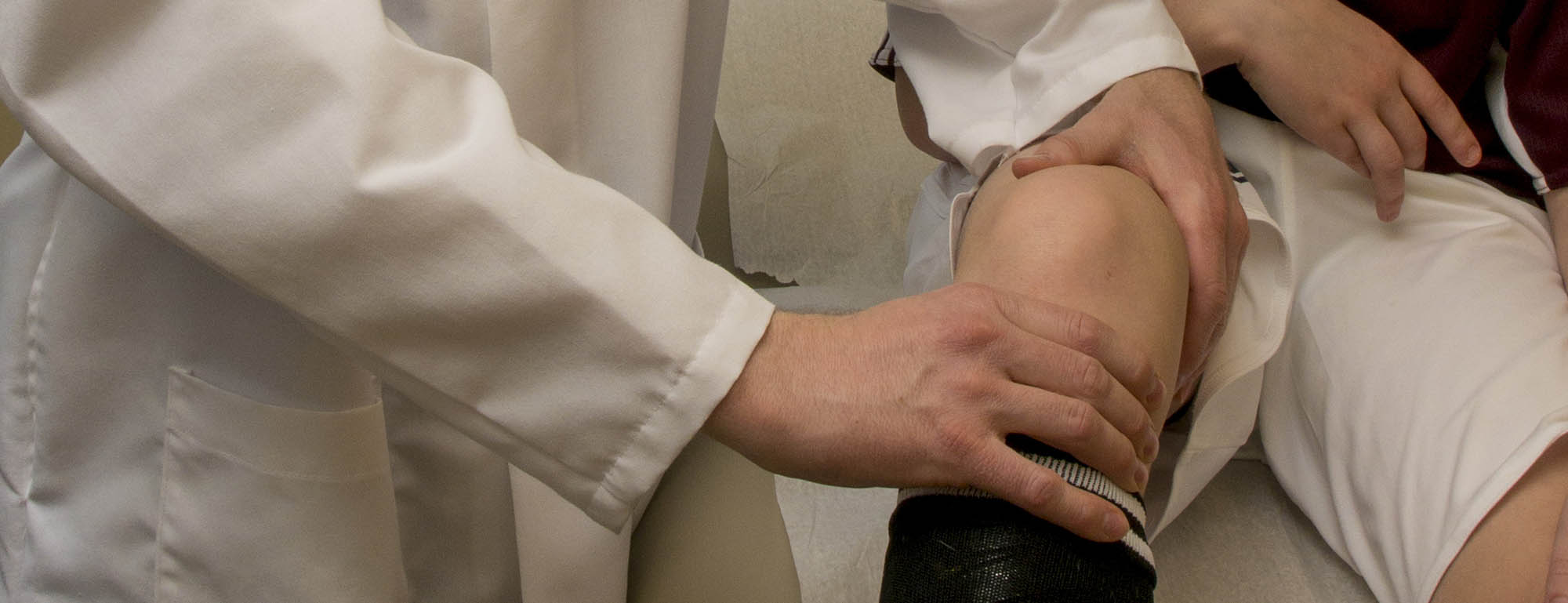In a novel study, University of New Mexico researchers have shown that injecting a patient’s own fat cells into arthritic knees is more effective at reducing pain and preserving function than other treatments.
The practice of administering micro-fragmented adipose tissue injections has been around for some years and is FDA-approved, but its effectiveness has never been systematically studied, said Dustin Richter, MD, associate professor in the Department of Orthopaedics & Rehabilitation and director of the UNM Sports Medicine fellowship.
“It’s a project we’ve been working on since January 2018,” Richter said. It came about after department chair Robert Schenck, MD, learned about the procedure at an orthopedics conference.
“We came up with the idea to do a study where we would evaluate it compared to two other groups,” Richter said. “One is corticosteroids, which most people get, and the other is placebo.”
The partially blinded study enrolled 75 patients who were randomized to one of three cohorts. To qualify for participation, the patients needed to have a knee arthritis diagnosis and a minimum pain score of three on a scale where 10 was the worst, he said.
Both Richter and the patients were blinded as to whether their knee injections contained either a steroid or a saline solution placebo. As for those receiving the fat injections, “We did not blind that group,” he said. “That’s the major limitation of the study.”
The fat-injection procedure showed better function and pain outcomes than the steroid or placebo treatments, Richter said. Patients who received steroids improved for two to four weeks, he said, but then their symptoms worsened, and at the end of a year they were actually slightly worse than when they started, he said.
Those who received the fat injections “continued to have a positive trend even at one year,” he said. “They are continuing to show improvement in their function and their pain, which is why we want to look at it longer out.”
Human adipose tissue – fat – is packed with a variety of cell types, Richter said.

People think of arthritis as a wear-and-tear problem, but it’s truly an inflammatory issue, and inflammation causes degradation of your cartilage
“People think of arthritis as a wear-and-tear problem, but it’s truly an inflammatory issue, and inflammation causes degradation of your cartilage,” he said. Although the precise mechanism still isn’t well understood, fat tissue “probably has a lot of anti-inflammatory cells that are reducing the inflammation.”
Through the years adipose tissue has been used in plastic reconstructive surgery, in ACL repairs and to augment healing for torn rotator cuffs, Richter said.
The in-office procedure takes about 45 minutes, he said. He uses a needle to draw fat tissue from the abdominal area, which is then refined into a liquid before being injected into the knee. “It’s like a small-scale liposuction,” he said. “It goes through a washing and filtering process.”
The study found the procedure was well tolerated, Richter said. “Apart from bruising at harvest sites we didn’t have any complications from the adipose group,” he said.
Validating an effective new treatment for knee osteoarthritis – the most common form of arthritis – could have major implications. As many as 27 million U.S. adults have clinical osteoarthritis in at least one joint, with an estimated economic burden of $188 billion.
While knee replacement is an effective treatment for osteoarthritis, it is expensive and is subject to some complications. In addition, the joint implants have a limited lifespan, and many patients wait until they’re older to have the surgery. All these factors lead to a significant “treatment gap,” in which people live with knee pain for years, Richter said.
“This is probably best for those patients who fall into a treatment gap,” he said. “It’s either patients who are young and have arthritis and they’re not ready to undergo a knee replacement surgery, or patients who maybe have multiple medical issues and might not be good surgical candidates.”
Richter and Schenck are preparing to publish the results of the study, which started with a $25,000 grant from the UNM Clinical & Translational Science Center. Their results have been presented at multiple venues nationally and internationally, with several awards for best paper and poster presentations, Richter said.
In the study’s next phase, the researchers are working with UNM scientist Erin Milligan, PhD, professor in the Department of Neurosciences, to analyze fat samples from the patients for signs of cytokines and chemokines – proteins that play a role in cell signaling.
Meanwhile, UNM will join multiple other sites across the U.S. in an FDA-approved double-blind, randomized trial based on Richter’s study design. In this trial everyone will undergo liposuction, but only some patients will receive an actual fat injection, he said.
“It's been a fun and rewarding journey the past five years,” Richter said.
